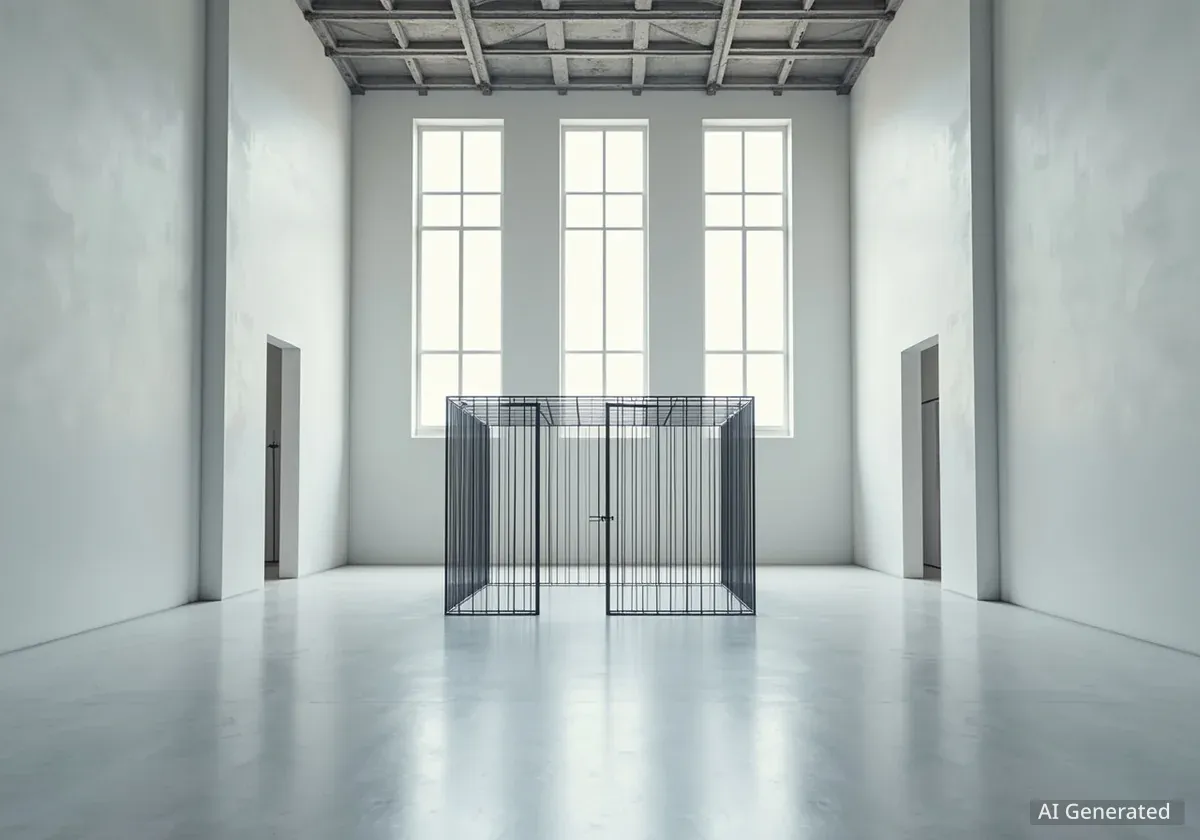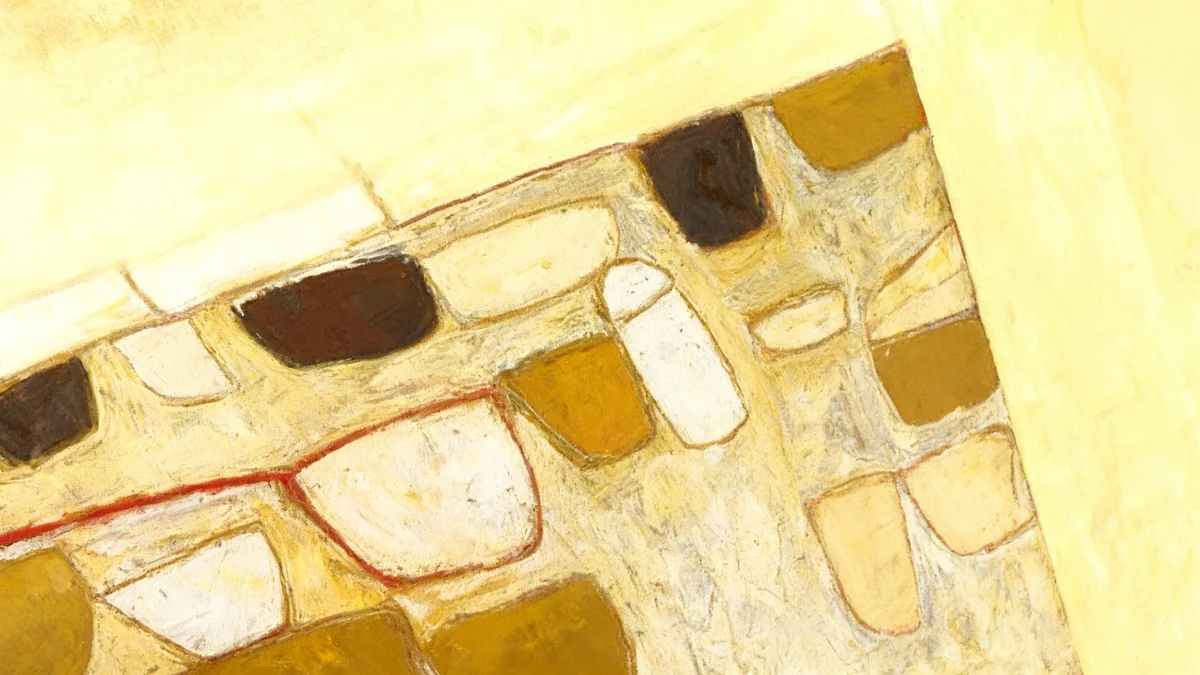A retrospective exhibition featuring the demanding performance art of Tehching Hsieh has opened at Dia Beacon in New York's Hudson Valley. The exhibition highlights Hsieh's year-long performance pieces, known for their rigorous physical and mental commitment. This marks the first major retrospective for the 74-year-old artist, whose work has significantly influenced contemporary art.
Hsieh's performances, often spanning 365 days, challenged conventional notions of art, time, and endurance. His most famous work involved living in a custom-built cage for an entire year without external contact or communication. This particular piece, titled 'One Year Performance 1978–1979,' is a central focus of the new exhibition.
Key Takeaways
- Tehching Hsieh's first retrospective is at Dia Beacon.
- The exhibition features his renowned year-long performance art.
- Hsieh lived in a cage for one year for a key performance piece.
- The artist spent 15 years finding a venue for his work.
A Look Inside the Cage Performance
From September 30, 1978, to September 30, 1979, Tehching Hsieh confined himself to a 9-by-11.5-foot cage. During this period, he did not engage in talking, reading, or writing. He also avoided listening to the radio and did not leave the enclosure. This act of self-imposed isolation was a direct challenge to the boundaries of art and human experience.
Almost five decades after this performance, Hsieh recently revisited the cage. He reassembled it in the basement of Dia Beacon. The artist, now 74, offered a tour of the reconstructed space to a reporter. He described the small enclosure as "home" during his year-long stay.
Performance Fact
- Duration: 365 days (September 30, 1978 – September 30, 1979)
- Space: 9 by 11.5 feet cage
- Restrictions: No talking, reading, writing, radio, or leaving the cage.
The reassembled cage serves as a powerful centerpiece for the retrospective. It allows visitors to experience a physical representation of the artist's extreme commitment. The exhibition aims to shed new light on the radical nature of Hsieh's work, which remains impactful and thought-provoking.
The Artist's Journey to Retrospection
Tehching Hsieh stopped creating new art in the year 2000. For the next decade, he focused on how to present his past works to a wider audience. His performances, though critically acclaimed, were often difficult to categorize and understand fully. He aimed to ensure their proper historical placement and interpretation.
It took Hsieh another 15 years to secure a venue for his first retrospective. Dia Beacon, a former factory transformed into a museum, ultimately provided the ideal space. The museum is known for its large-scale installations and minimalist art, aligning well with Hsieh's unique approach.
"This is home," Tehching Hsieh stated proudly, reflecting on his year in the cage. His words emphasize the profound personal connection he formed with his art during the performance.
About Dia Beacon
Dia Beacon is a museum located on the Hudson River in Beacon, New York. It is part of the Dia Art Foundation. The museum exhibits art from the 1960s to the present. Its spacious galleries are designed to house large-scale works and installations, providing artists with a unique environment for their art.
The exhibition, which opened on October 4, will run for two years. This extended duration allows ample opportunity for visitors to engage with Hsieh's challenging and influential art. The retrospective offers a comprehensive look at an artist who pushed the boundaries of performance art.
Impact and Legacy of Tehching Hsieh's Work
Tehching Hsieh's year-long performances are considered some of the most rigorous in the history of performance art. His work explored themes of time, isolation, endurance, and the definition of art itself. These pieces have inspired and influenced many artists globally, including prominent figures like Marina Abramović and Ai Weiwei, who also engage with long-duration or socially critical performances.
His performances included other equally demanding projects. For example, in 'One Year Performance 1980–1981,' Hsieh punched a time clock every hour for a year. He also spent a year living outdoors in New York City, avoiding shelter, in 'One Year Performance 1981–1982.' Each project tested the limits of human will and artistic expression.
According to art critics, Hsieh's work forces viewers to confront uncomfortable truths about societal norms and personal freedom. His art is not just about what he did, but about the profound questions it raises. The exhibition at Dia Beacon provides a crucial opportunity to re-evaluate his legacy and its relevance in contemporary discourse.
- Key Influences: Hsieh's work draws from conceptual art and body art traditions.
- Global Recognition: Despite limited public display, his performances are globally recognized for their intensity.
- Ongoing Relevance: The themes of isolation, time, and endurance remain highly relevant today.
The retrospective highlights not only the physical acts but also the extensive documentation Hsieh produced for each piece. This documentation, including photographs, written statements, and witness reports, is an integral part of the artwork. It provides evidence and context for the performances, which could otherwise only exist as fleeting experiences.
The exhibition at Dia Beacon aims to provide a deeper understanding of Hsieh's artistic philosophy. It allows both new audiences and long-time admirers to witness the meticulous planning and profound dedication behind his challenging works. This show solidifies his position as a crucial figure in the history of performance art.




